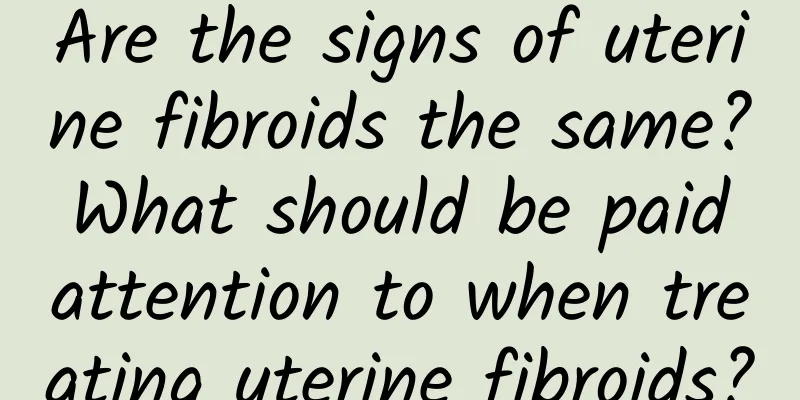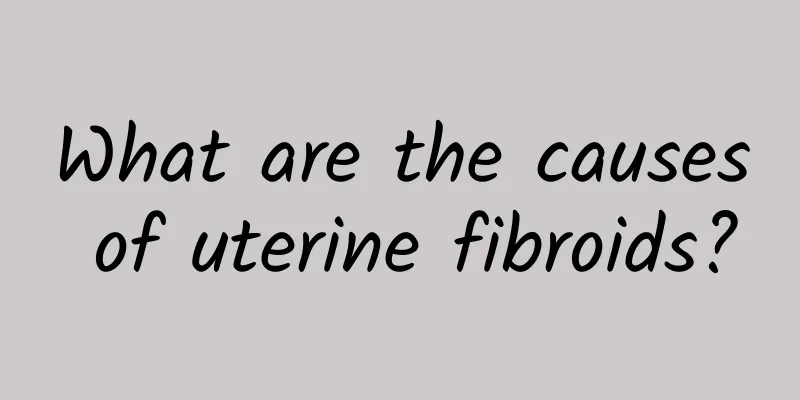Are the signs of uterine fibroids the same? What should be paid attention to when treating uterine fibroids?

|
Uterine fibroids with blood stasis have dark purple tongue, thick and dry fur, and deep, astringent and strong pulse. Blood stasis blocks the body fluids, and the mouth is dry and does not want to drink. So, are the signs of uterine fibroids the same? What should be paid attention to in the treatment of uterine fibroids? Gynecological double diagnosis and triple diagnosis examinations show that the uterus is enlarged to varying degrees, irregular, irregular protrusions on the surface of the uterus, solid, and soft in texture. During the gynecological examination, the signs of uterine fibroids vary depending on the type. If the pedicled subserosal fibroid is long, a solid mass can be felt next to the uterus and can move freely. This situation is easily confused with an ovarian tumor. Submucosal fibroids descend to the cervical canal, and the cervical canal is loose. The examiner's finger is inserted into the cervix and a smooth spherical tumor can be felt. If it falls off from the cervical canal, the tumor can be seen, with a dark red surface, sometimes with ulceration and necrosis. Many patients with uterine fibroids have various misunderstandings because they do not understand the nature of fibroids, and often choose wrong or inappropriate treatment plans. Therefore, the following misunderstandings should be noted in the treatment of uterine fibroids: Misconception 1: Hysterectomy and cervicectomy Hysterectomy is still the main method of surgical treatment for uterine fibroids. The main advantage of hysterectomy is that there is no risk of fibroid recurrence and other uterine diseases in the future, and the disadvantage is the loss of the uterus. Subtotal hysterectomy, that is, preserving the cervix, has the advantage of maintaining the integrity of the pelvic floor structure, and the disadvantage is the loss of the uterus and the risk of residual cervical disease (mainly cervical cancer). The following situations are often encountered in our clinical work. Misunderstanding 2: Expecting menopause Most patients with uterine fibroids know that "fibroids will shrink after menopause", so "looking forward to menopause" becomes a "thought" in the patients' minds. With this "thought", they enter the long follow-up stage. Most fibroids will shrink after menopause, which is correct because sex hormones (estrogen and progesterone) depend on tumor growth. After menopause, estrogen and progesterone decrease, inhibiting fibroid growth. For women with uterine fibroids, some effective drugs can be tried, such as Guizhi Fuling Capsule: used for lumps, amenorrhea, dysmenorrhea, and postpartum lochia caused by blood stasis in women; uterine fibroids, chronic pelvic inflammatory masses, dysmenorrhea, and endometriosis. Dangui Capsule: used for uterine fibroids and pelvic inflammatory masses caused by qi stagnation and blood stasis, with symptoms of lower abdominal distension and pain, lumbar pain, heavy discharge, anal swelling, and dark spots on the tongue. Dahuang Zhechong Pill: used for blood stasis, abdominal lumps, skin and nail discoloration, dark eye sockets, hot flashes, emaciation, and amenorrhea. |
>>: Common treatment methods for uterine fibroids How to treat uterine fibroids
Recommend
What are the reasons why medical abortion is not as effective as surgical abortion?
Modern women choose abortion from the perspective...
How effective is cone excision for chronic cervicitis?
How effective is cone excision for chronic cervic...
Experts explain important inspection measures for painless abortion
Although compared with other abortion surgeries, ...
Early symptoms of ectopic pregnancy
Early symptoms of ectopic pregnancy: Ectopic preg...
Several common methods for treating acute cervicitis
With the advancement of medical technology, there...
How much does it cost to have a painless abortion?
How much does it cost to have a painless abortion...
When is uterine fibroids considered serious? How to judge uterine fibroids
Generally, as long as uterine fibroids are found,...
What are the early pictures of female cervical warts
Cervical warts are a very harmful disease. The ma...
Will cervical erosion lead to infertility? Do two things to prevent cervical erosion from becoming cancerous
Cervical erosion brings a lot of trouble to women...
The importance of preventing functional uterine bleeding
Dysfunctional uterine bleeding is one of the most...
Expert advice: How to treat cervical erosion
According to recent surveys and studies, the numb...
What is the specific cause of ovarian cysts?
Ovarian cysts are not unfamiliar to women ! Perha...
How to treat bacterial vaginosis
Bacterial vaginitis is a very common gynecologica...
Why is my menstruation always irregular? There are 5 causes of irregular menstruation
With the development of society, the pace of life...
Several common treatments for vulvar leukoplakia
How to cure vulvar leukoplakia? In fact, the purp...









